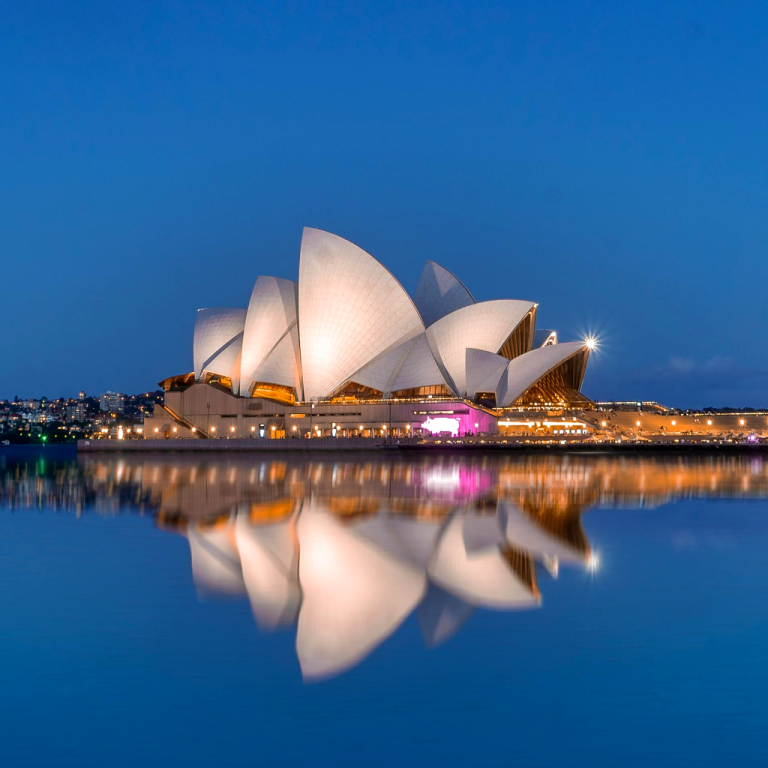The Sydney Opera House is one of the most recognizable and celebrated buildings in the world. Nestled on Bennelong Point in Sydney Harbour, Australia, it is a masterpiece of modern architecture and a vibrant center for performing arts. This instructive article explores the history, architectural significance, and cultural impact of the Sydney Opera House.
Historical Background
Conception and Design Competition
The story of the Sydney Opera House began in the late 1940s when the need for a dedicated performing arts center in Sydney became evident. In 1955, the New South Wales government launched an international design competition, inviting architects to submit their visions for the new opera house. Danish architect Jørn Utzon’s innovative design, featuring a series of white, sail-like shells, won the competition in 1957. His concept was chosen for its striking aesthetic and its potential to become a global icon.
Construction Challenges
The construction of the Sydney Opera House was a monumental task fraught with challenges. Begun in 1959, the project faced significant technical and engineering hurdles, particularly in realizing the complex geometry of the roof shells. The original budget was estimated at AUD 7 million, but due to numerous delays and changes in design, the final cost soared to AUD 102 million. Despite these setbacks, the Opera House was completed and officially opened by Queen Elizabeth II on October 20, 1973.
Architectural Significance
Design and Structure
The Sydney Opera House is renowned for its distinctive design, which consists of three groups of interlocking vaulted shells set upon a massive platform. The shells, resembling a fleet of sails, are made from precast concrete panels and covered with a staggering 1,056,006 glossy white and matte cream Swedish tiles. These tiles not only enhance the building’s aesthetic appeal but also contribute to its durability and ease of maintenance.
Engineering Feats
The engineering behind the Sydney Opera House is as impressive as its design. Arup Group, led by Ove Arup, played a pivotal role in solving the structural challenges posed by the roof shells. The innovative use of computer-aided design (CAD) allowed engineers to accurately model the complex curves and ensure the stability of the shells. The result is a structure that seamlessly blends form and function, standing as a testament to human ingenuity and creativity.
Interior Spaces
The interior of the Sydney Opera House is as captivating as its exterior. The building houses multiple performance venues, including the Concert Hall, the Joan Sutherland Theatre, the Drama Theatre, the Playhouse, and the Utzon Room. Each space is meticulously designed to provide exceptional acoustics and a unique atmosphere, catering to a wide range of artistic performances.
Cultural Impact
A Hub for Performing Arts
Since its opening, the Sydney Opera House has become a premier destination for performing arts. It hosts over 1,500 performances annually, spanning opera, ballet, theater, music, and more. The Opera House is home to several resident companies, including Opera Australia, the Sydney Theatre Company, and the Sydney Symphony Orchestra. Its diverse programming attracts millions of visitors each year, making it a vibrant cultural hub.
A Symbol of Australia
The Sydney Opera House is more than just a performing arts venue; it is a symbol of Australia. Its iconic silhouette is instantly recognizable and has become synonymous with Sydney and the nation as a whole. The Opera House is featured prominently in tourism campaigns and is a UNESCO World Heritage Site, underscoring its global significance and cultural heritage.
Community Engagement and Education
The Sydney Opera House is committed to community engagement and education. It offers a variety of programs designed to inspire and educate people of all ages. These include guided tours, workshops, and educational initiatives that provide insight into the history, architecture, and performances of the Opera House. By fostering a deeper connection with the community, the Opera House ensures its legacy continues for future generations.
Sustainability and Future Prospects
Environmental Initiatives
In recent years, the Sydney Opera House has undertaken several initiatives to enhance its sustainability. These efforts include energy-efficient lighting, waste reduction programs, and water conservation measures. The Opera House aims to achieve carbon neutrality and continues to explore innovative ways to reduce its environmental footprint.
Ongoing Renovations and Upgrades
To maintain its status as a world-class performing arts venue, the Sydney Opera House undergoes regular renovations and upgrades. These projects focus on preserving the building’s architectural integrity while incorporating modern amenities and technologies. Notable recent upgrades include the renewal of the Concert Hall and the implementation of advanced sound and lighting systems.
Conclusion
The Sydney Opera House stands as a beacon of architectural brilliance and cultural vitality. From its audacious conception to its enduring legacy, it exemplifies the power of visionary design and human achievement. As a symbol of Australia and a global center for the arts, the Opera House continues to inspire and captivate audiences from around the world. Through its commitment to excellence and sustainability, the Sydney Opera House will undoubtedly remain an iconic marvel for generations to come.






